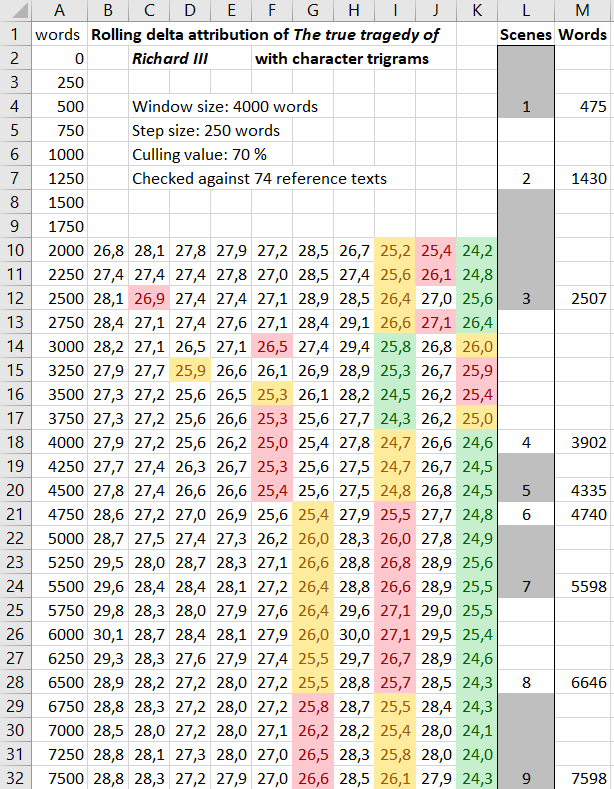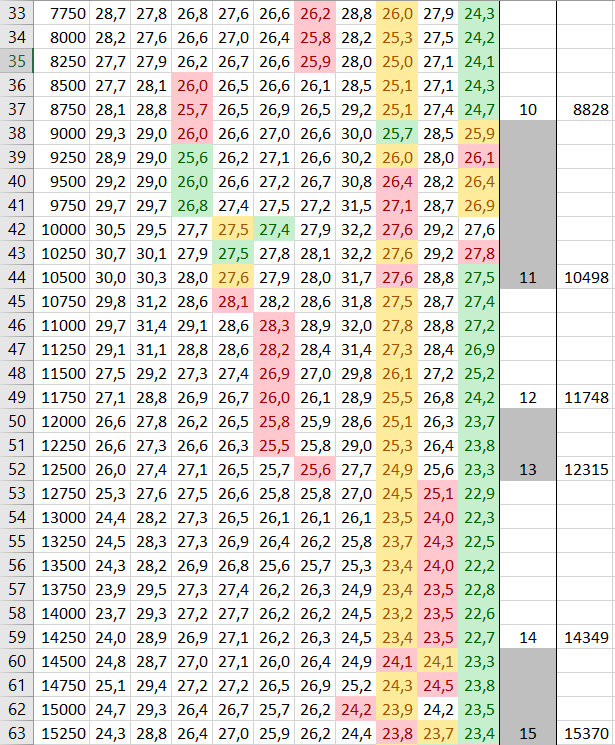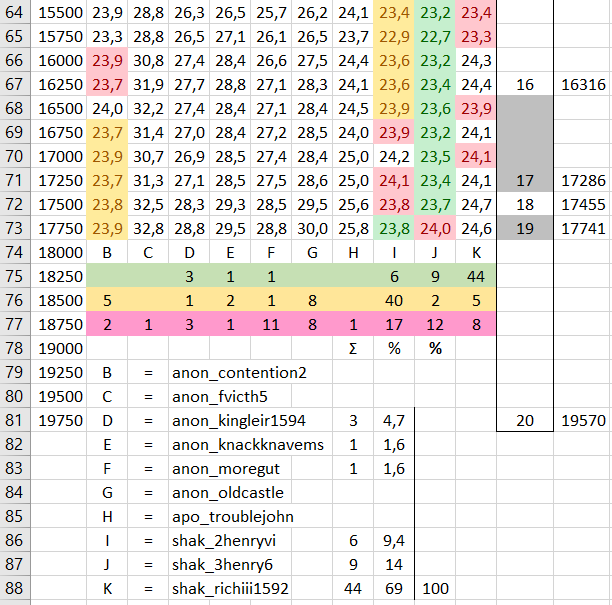Shakespeare Statistics
Authorship of The True Tragedy of Richard III
 auf deutsch
All data were generated by R Stylo (see: Computational Stylistics Group Homepage).
auf deutsch
All data were generated by R Stylo (see: Computational Stylistics Group Homepage).
Rolling delta is a feature of the R Stylo suite, a program to measure the delta distances between reference texts and a
target text. Delta was developed by John Burrows in 2002, and Rolling delta overcame the problem that one delta figure
covered a whole text by introducing windows of a particular size that ‘rolled’ through the text with an overlap, so that
many measurements were taken. In this way collaborations of authors and affinities between texts could be detected.
To reduce subjectivity in the choice of reference texts a totality of over 150 drama reference texts from the Renaissance
period that had been collected over the years were used in the analysis. This took my PC to the end of its tether, but the
results gained from 4000-word windows, a step size of 250 words and character trigrams as variables give clear indications
of authorships and textual affinities. A spreadsheet noted the titles of plays in column A, column B noted the delta values of
each play at 250 words (5000-word window). Column C returned the delta measurements taken at 2750 word (step size 250 words),
and this continued to the right depending on the length of the target text. In each column (except A) the three lowest deltas
were marked and all play titles without any marking were erased. The remaining texts went into a new table (after a 90° turn)
which can be found below. Column A gives the measuring at a distance of 250 words. From column B to the right the texts
(and authors) with the lowest deltas are noted. The last two columns on the right return the scenes of the play and their
accumulated word counts, adapted to the 250-word distances of column A. The lowest delta in each line is marked in green, the
second-lowest in yellow, and the third lowest in red.



 auf deutsch
All data were generated by R Stylo (see: Computational Stylistics Group Homepage).
auf deutsch
All data were generated by R Stylo (see: Computational Stylistics Group Homepage). auf deutsch
All data were generated by R Stylo (see: Computational Stylistics Group Homepage).
auf deutsch
All data were generated by R Stylo (see: Computational Stylistics Group Homepage).

